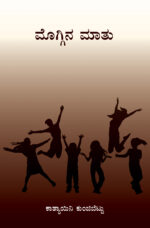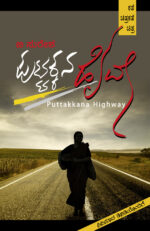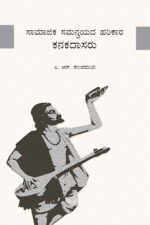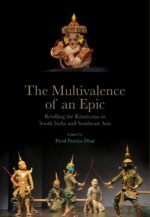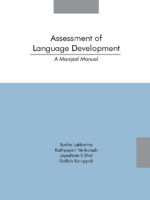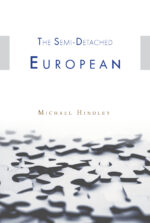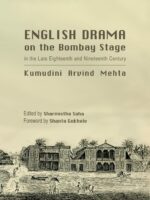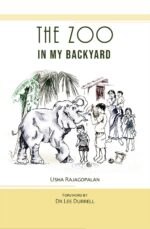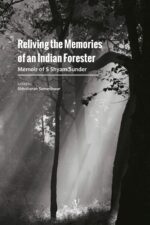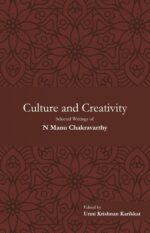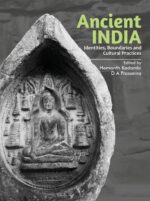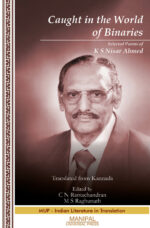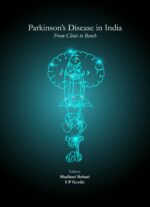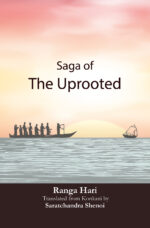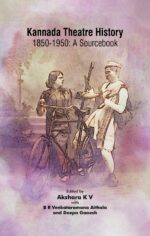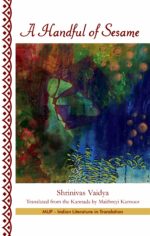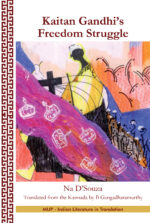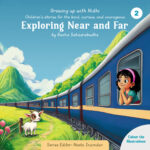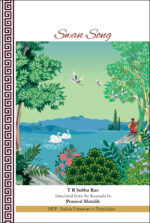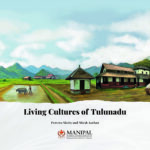-
Moggina Maathu
₹350.00Author: Kathyayini Kunjibettu
ಹಳೆಯ ಕಥೆಗಳು ಮತ್ತು ಲೇಖಕರನ್ನು ಹೊಸ ಸಾಹಿತ್ಯ, ಬರಹಗಾರರು ಬದಲಿಸುವುದು ಸಹಜ. ಕಳೆದುಹೋದ ಸಾಹಿತ್ಯದ ನೆನಪುಗಳನ್ನು ಜೀವಂತವಾಗಿಡುವ ಪ್ರಯತ್ನದಲ್ಲಿ, ಸಮಕಾಲೀನ ಲೇಖಕಿ ಡಾ.ಕಾತ್ಯಾಯನಿ ಕುಂಜಿಬೆಟ್ಟು ಅವರು ತಮ್ಮ ಇತ್ತೀಚಿನ ಪುಸ್ತಕ ಮೊಗ್ಗಿನ ಮಾತುಗಳಲ್ಲಿ ಶ್ರೀ ಪಾಲಕಲಾ ಸೀತಾರಾಮ ಭಟ್ ಅವರ ಕಥೆಗಳ ವಿಮರ್ಶೆಯನ್ನು ಪ್ರಸ್ತುತಪಡಿಸಿದ್ದಾರೆ. ಹಳೆಯ ತಲೆಮಾರಿನವರಿಗೆ ಇದು ನೆನಪಿನ ಹಾದಿಯಲ್ಲಿ ಒಂದು ಪ್ರವಾಸವಾಗಿದೆ ಮತ್ತು ಕಿರಿಯರಿಗೆ ಶ್ರೀ ಸೀತಾರಾಮ್ ಭಟ್ ಅವರ ಕೃತಿಗಳನ್ನು ಓದಲು ಮತ್ತು ಅವರ ಜೀವನವನ್ನು ಉತ್ಕೃಷ್ಟಗೊಳಿಸಲು ಸ್ಫೂರ್ತಿಯಾಗಿದೆ.ಹೊಸ ಹೊಸ ಸಾಹಿತ್ಯಸೃಷ್ಟಿಯಿಂದಾಗಿ ಹಳೆಯ ಸಾಹಿತ್ಯ ಹಿನ್ನಲೆಗೆ ಸರಿಯುವುದು ಸಹಜ . ಆಧುನಿಕ ಸಾಹಿತ್ಯದಲ್ಲಿ ಒಂದಿಷ್ಟು ವೇಗವಾಗಿಯೇ ಸಂಭವಿಸುತ್ತಿರುವ ಇಂಥ ಕ್ರಿಯೆಯಿಂದಾಗಿ ಹಳೆಯ ತಲೆಮಾರಿನ ಸಾಹಿತಿಗಳು ವಿಸ್ಮೃತಿಗೆ ಒಳಗಾಗುತಿದ್ದಾರೆ. ಸಮಗ್ರ ಅಭ್ಯಾಸದ ಮೂಲಕ ಇಂಥವರನ್ನು, ಇಂಥವರ ಸಾಹಿತ್ಯವನ್ನು ಮುನ್ನೆಲೆಗೆ ತರುವುದು ನಿರಂತರ ನಡೆಯಬೇಕಾಗುತ್ತದೆ. ಈ ಬಗೆಯ ಅಧ್ಯಯನವಾಗಿದೆ ಮಕ್ಕಳ ಸಾಹಿತಿ ಪಳಕಳ ಸೀತಾರಾಮ ಭಟ್ಟರನ್ನು ಕುರಿತ ‘ಮೊಗ್ಗಿನ ಮಾತು ‘.
Interested readers may write to us at mup@manipal.edu about purchasing the book. -
Puttakkana Highway
₹350.00ಪುಸ್ತಕವು ಮೂಲ ಕಥೆಯಿಂದ ಪ್ರಶಸ್ತಿ ವಿಜೇತ ದೃಶ್ಯ ಚಿಕಿತ್ಸೆಯಾಗಿ ಪರಿವರ್ತನೆಗೊಂಡ ಪ್ರಯಾಣದ ಬಗ್ಗೆ ಹೇಳುತ್ತದೆ ಮತ್ತು ನಂತರ ಸ್ಕ್ರಿಪ್ಟ್, ವಿಮರ್ಶೆಗಳು ಮತ್ತು ಚರ್ಚೆಗಳೊಂದಿಗೆ ಪದ ರೂಪಕ್ಕೆ ತಿರುಗುತ್ತದೆ. ಸಂಶೋಧಕರಿಗೆ, ಇದು ಪದಗಳಿಂದ ಸ್ಕ್ರಿಪ್ಟ್ಗೆ ದೃಶ್ಯಗಳಿಗೆ ಮತ್ತು ಪದಗಳಿಗೆ ಹಿಂತಿರುಗುವ ಪ್ರಯಾಣದ ಕಲಿಕೆಯ ಅನುಭವವನ್ನು ನೀಡುತ್ತದೆ. ಚಲನಚಿತ್ರ ರಸಿಕರಿಗೆ ಇದು ಕಥೆಯು ಚಲನಚಿತ್ರವಾಗಿ ಹೇಗೆ ಹೊರಹೊಮ್ಮುತ್ತದೆ ಎಂಬುದರ ರಿಂಗ್ಸೈಡ್ ನೋಟವನ್ನು ನೀಡುತ್ತದೆ. ಅರ್ಥಶಾಸ್ತ್ರಜ್ಞರು ಮತ್ತು ಮಾನವ ಕಾರ್ಯಕರ್ತರಿಗೆ, ಇದು ಅಭಿವೃದ್ಧಿಯ ಸಮಸ್ಯೆಗೆ ಹೊಸ ದೃಷ್ಟಿಕೋನವನ್ನು ನೀಡುತ್ತದೆ. ಈ ಪುಸ್ತಕದಲ್ಲಿ “ಪುಟ್ಟಕ್ಕನ ಹೈವೇ” ಚಲನಚಿತ್ರದ ಚಿತ್ರಕಥೆ ಮಾತ್ರವೇ ಅಲ್ಲದೆ , ಚಿತ್ರದ ಕುರಿತಂತೆ ಬಂದ ವಿಮರ್ಶೆಗಳು, ಚಿತ್ರವನ್ನು ಕುರಿತಂತೆ ನಡೆದ ಸಂವಾದದ ವಿವರಗಳು, ಚಿತ್ರದ ಡಿವಿಡಿ ಮತ್ತು ನಾಗತಿಹಳ್ಳಿ ಚಂದ್ರಶೇಖರ್ ಅವರ ಮೂಲಕಥೆ “ಪುಟ್ಟಕ್ಕನ ಮೆಡಿಕಲ್ ಕಾಲೇಜ್” ಸಹ ಇದೆ.
Interested readers may write to us at mup@manipal.edu about purchasing the book.
-
Saamajika Samanvayada Harikara – Kanaka Dasaru
₹285.00Author: P R Panchamukhi
ಕನಕದಾಸರ ಜೀವನವೇ ಸಮನ್ವಯತೆಯ ಪ್ರತಿಬಿಂಬವಾಗಿತ್ತು. ಹುಟ್ಟಿದ್ದು ಕುರುಬರ ಮನೆತನದಲ್ಲಿ; ಬೆಳೆದದ್ದು ಸಂಸಾರದ ಜಂಜಾಟದ ರಾಜಕೀಯ ಪರಿಸರದಲ್ಲಿ; ಜೀವನದ ಕೊನೆ ಕೊನೆಗೆ ಒಡನಾಟವನ್ನಿಟ್ಟುಕೊಂಡದ್ದು ಬ್ರಾಹ್ಮಣರ ಪರಿಸರದಲ್ಲಿ, ಅಂತಿಮವಾಗಿದ್ದದ್ದು ದಾಸಭಾವದ ನೆಲೆಗಟ್ಟಿನಲ್ಲಿ. ಹೀಗಾಗಿ, ಅವರು ಒಂದು ನೆಲೆಯಲ್ಲಿ ತಮ್ಮ ಸಮಗ್ರ ಜೀವನವನ್ನು ನಡೆಸಲಿಲ್ಲ. ಆದರೆ, ಅವರಿಗಿದ್ದುದು ಸಾಧಕನ ನೆಲೆ. ಹುಟ್ಟಿದ್ದು ಬೆಳೆದಿದ್ದು ನಾಯಕನ ಕುಲದಲ್ಲಿ, ಜೀವನದ ಹರೆಯ ಹಾಗೂ ಕೊನೆಯ ಕಾಲದಲ್ಲಿ ದೇವರ ದಾಸನಾಗುವ ಲವಲವಿಕೆಯನ್ನು ಬೆಳೆಸಿಕೊಂಡಿದ್ದು; ದ್ವೇಷ, ಕ್ರೌರ್ಯಗಳ ದಟ್ಟಿ ನಿಂದ ಭಕ್ತಿಯ ಮೆಟ್ಟಿಲುಗಳೆಡೆಗೆ ಸಾಗಿದ್ದು. ಹೀಗೆ ಕನಕದಾಸರ ಜೀವನವು ಪರಸ್ಪರ ವಿರೋಧಗಳ ಬೀಡಾಗಿದ್ದರೂ ಅಂತರಂಗದಲ್ಲಿ ಅದು ಸಮನ್ವಯತೆಯ ನೆಲೆಯನ್ನು ಮೈಗೂಡಿಸಿ ಕೊಂಡಿತ್ತು. ಕನಕದಾಸರು ಸಮಗ್ರವಾದ ಸಮನ್ವಯ ದೃಷ್ಟಿಯ ಹರಿಕಾರರೆನಿಸಿದರು.
Interested readers may write to us at mup@manipal.edu about purchasing the book.
-
The Multivalence of an Epic: Retelling the Ramayana in South India and Southeast Asia
₹3,000.00Editor: Parul Pandya Dhar
The Ramayana traditions of South India and Southeast Asia are examined at multiple levels in this volume. The research presented here offers in-depth investigations of chosen moments in the development of the epic tradition together with broader trends that help in understanding the epic’s multivalence. The journey and localization of the Rāmāyaṇa is explored in its manifold expressions from classical to folk, from temples and palaces to theatres and by-lanes in cities and villages, and from ancient to modern times. Regional Rāmāyaṇas from different parts of South India and Southeast Asia are placed in deliberate juxtaposition to enable a historically informed discussion of their connected pasts across land and seas. The three parts of this volume, organized as visual, literary, and performance cultures, discuss the sculpted, painted, inscribed, written, recited, and performed Ramayanas. A related emphasis is on the way boundaries of medium and genre have been crossed in the visual, literary, and performed representations of the Rāmāyaṇa. These are rewarding directions of research that have thus far received little attention. Bringing together 19 well-known scholars in Ramayana studies from Cambodia, Canada, France, India, Indonesia, Malaysia, Singapore, Thailand, UK, and USA, this thought-provoking and elegantly illustrated volume engages with the inherent plurality, diversity, and adaptability of the Rāmāyaṇa in changing socio-political, religious, and cultural contexts and with shifting norms, tastes, traditions, and ideologies.
Interested readers may write to us at mup@manipal.edu about purchasing the book.
-
Autobiography of a Surgeon
₹300.00Author: C Ramakrishna Ballal
This is an interesting and a vivid account of life by an accomplished surgeon with his first-hand knowledge of medicine and the rich experience gathered over the years. The narrative is almost like a self-portrait by an artist. Author’s exceptional journey from a young lad in an agrarian family to a celebrated doctor-teacher, not only documents his personal life but that of medical and surgical history of about five decades in this region.
Interested readers may write to us at mup@manipal.edu about purchasing the book.
-
Transformation Beyond Sight
₹395.00Author: Jibu Thomas
Transformation Beyond Sight is a gripping narrative of the author’s experience in the hospital administration of Kasturba Hospital (KH), Manipal. As an experiential account, the present book provides insights into the thoughts, concerns, and apprehensions of prospective hospital administrators, and spotlights the vital role played by a hospital administrator in the day-to-day operations of KH, which is also an advanced healthcare facility.This book draws attention to the transformational quality of the author’s experiences to emphasize that the evolution in leadership and management of the teaching hospital went hand-in-hand with the transformation of the author’s administrative skills, and his own persona as a diligent administrator. The biographical undertone also provides an insight into the complex and dynamic healthcare environment, alongside the competencies, creativity, and mindfulness necessary for an administrator. This book narrates a hospital administrator’s engagements with the traditional processes and his attempts to bring about effective changes in the management and monitoring of operations of KH and the overall management of a healthcare facility.
Interested readers may write to us at mup@manipal.edu about purchasing the book.
-
Assessment of Language Development
₹490.00Authors: Sudha Lakkanna, Kathyayani Venkatesh, Jayashree S Bhat, Sudhin Karuppali
The first edition of the ALD was piloted in 2008 and has been used in various clinics and institutes. The ALD was revised and the latest version is designed for use in clinical and educational settings. Few basic differences between the earlier and the present version are the division of each age level into six-month intervals (from zero to six years), an increase in the number of test items per age level, and extension of the tool up to ten years of age. The ALD-MM can be used to assess the language skills in infants and young children. The test items have been chosen to reflect and assess receptive as well as expressive language development. The precursors to language development like attention and vocal development are embedded in the test.
-
The Semi-Detached European
₹350.00Author: Michael Hindley
The European Union has emerged as a world economic power from the ashes of the Second World War. Starting with the post-war settlement, the book takes a broad and informed view of Britain’s changing relationship with this dynamic development. The successful attempt to revive democracy and establish economic recovery in Western Europe was fuelled by Franco-German reconciliation but Britain remained benevolently aloof. Britain’s own recovery was not as successful as that of the emerging “Common Market”, and so Britain’s political elite looked to Europe to replace the markets it was losing worldwide only to be spurned by her long-time rival France. Thereon, Britain played an influential role, especially in the development of the “internal market”. However, Britain never quite lost the tag of being semi-detached – wanting to take the benefits but always wary of surrendering national sovereignty for the alleged greater good. This book reviews the vital role played by major actors in Europe’s integration, including the decisive duel between Margaret Thatcher and Jacques Delors about the nature of the Europe. It provides an assessment of the epoch-making events of the fall of Berlin Wall which opened the possibility of a reunited Europe.
In this book, the author also describes his own “Europeanization” as a student, and then as an active politician who engaged in Europe’s transformation first-hand.
Interested customers may write to us at mup@manipal.edu about purchasing the book.
Also available on

-
English Drama on the Bombay Stage in the Late Eighteenth and Nineteenth Century
₹570.00Author: Kumudini Arvind Mehta Editor: Sharmishta Saha
Theatre in Mumbai or colonial Bombay emerged at a time when the city was still finding its own contours and taking shape. “Theatre” in the sense of the art form and the word that we know today, which has been comfortably incorporated in almost all Indian languages also took shape during this early period. Kumudini Arvind Mehta’s doctoral dissertation, submitted to the University of Bombay, now known as University of Mumbai is being published in the form of this book. It navigates the journey of “theatre” starting with the early “amateur theatre” at Bombay Green in the late eighteenth century. Today we know this area as the Horniman Circle in Mumbai. She traces the origins of professional theatre in colonial Bombay to the amateur exercises of the English inhabitants, the Parsi businessmen and the English educated local inhabitants of the city. She painstakingly goes through newspaper articles and announcements, old journals, property papers, old maps etc., to weave the narrative of “theatre” that shapes the legacy of the art form that was either inherited or rejected by later artists. Mehta’s work is significant not only for the study of “theatre” but also to understand colonial sociability and the role of the English language in this regard. Sharmistha Saha, the editor of the book has given it its present shape. She has primarily updated citations, incorporated information on current research as also images of the erstwhile theatre districts wherever applicable.
Interested readers may write to us at mup@manipal.edu about purchasing the book.
-
Pharmaceutical Consumer Complaints: A Guide to Academia and Pharmaceutical Industry
₹795.00Editors: Girish Pai Kulyadi, Muddukrishna B S, Richa Ajay Dayaramani
This book is an excellent guide in analyzing consumer complaints and will aid the students who are yet to gain industry experience. It is necessary for resolving consumer complaints in pharmaceutical industry where such concerns are frequently received. The case studies provide a vivid description of defects that will help identify the nature of the issue, possible root cause of such complaints, and subsequent remediation.
Interested readers may write to us at mup@manipal.edu about purchasing the book.
-
The Zoo In My Backyard
₹290.00Author: Usha Rajagopalan
What can you expect in a family of quirky adults, hyperactive children, and an assortment of pets? The author and her siblings shared their childhood with Kesavan, the incorrigibly curious black monkey; Judie, the nimble giant squirrel; Mini, the shy mouse deer that strayed; Psitta, the cackling parakeet; Devil, the runaway hound and many more creatures great and small. The adventures of the children and antics of their pets, together with the adults in the family make for a whole lot of fun and laughter ? not just in the backyard but indoors as well.
Interested readers may write to us at mup@manipal.edu about purchasing the book.
-
Reliving the memories of an Indian forester: Memoir of S Shyam Sunder
₹450.00Editor: Shiv Someshwar
Shyam Sunder’s memoir is a series of vignettes, from numerous comedic to a tragic few. The life narrated is varied and never short of excitement – being ten yards from a charging tusker or a foot away from a King Cobra; defying orders of the chief minister; being hauled up for contempt of the high court, and discussing with Indira Gandhi the best way to eat avocados. Possessed of wit and passion, the narration lays bare the hubris of popular discourse on noble forest livelihoods, and unflinchingly narrates neglect of rural communities, as well as of forests, at times by the callous imposition of rules and regulations.
Interested readers may write to us at mup@manipal.edu about purchasing the book.
-
Culture and Creativity: Selected Writings of N Manu Chakravarthy
₹450.00Author: Manu Chakravarthy Editor: Unni Krishnan Karikkat
Culture and Creativity is a collection of essays of N Manu Chakravarthy, a prominent culture critic known for his discourses on music, cinema, literature and several aspects of culture and philosophy. This book illustrates the intellectual and ethical perspectives that shape his discussions on wide range of issues. These discussions are reflective of the inspiration he draws from his father Prof G N Chakravarthy and his teachers Prof C D Narasimhaiah, Prof U R Ananthamurthy, and Prof B Damodara Rao. The ideas of Ivan Illich and Noam Chomsky, and his friend D R Nagaraj are also instrumental in framing the critical nature of his interpretations. The essays in this book encompass Prof Manu Chakravarthy’s perspectives on religion, secularism, tradition, and modernity. The references to Sri Narayanaguru, M K Gandhi, Rabindranath Tagore, and the interview with Gustavo Esteva, evince his preoccupation with madhyamamarga. They also foreground his views on nationalism, metaphysics, media, politics and the crises of the third world and India in a globalised context. This work is a testimony to the form of scholarship he values.
Interested readers may write to us at mup@manipal.edu about purchasing the book.
-
Ancient India: Identities, Boundaries and Cultural Practices
₹800.00Editors: D A Prasanna, Hemanth Kadambi
The book comprises of papers which reflect on the multiple strands of scholarship on ancient India and also explores alternate perspectives for understanding India’s past. Both textual and archaeological sources are used in framing the book, and the themes include connected histories, identities, and cultural practices, which make the book an interesting read. It is a beginning to revitalize India’s diverse and profound past with a new-found rigour to inform the reader the incredible diversity and richness of the historical construction of the past.
Interested readers may write to us at mup@manipal.edu about purchasing the book.
-
Caught in the World of Binaries: Selected Poems of K S Nisar Ahmed
₹310.00Author: K S Nisar Ahmed Editors: C N Ramachandran, M S Raghunath
Professor K S Nisar Ahmed (b 1936) is a geologist by profession and a major writer in Kannada. His first collection of poems, Manasu Gandhi Bazar (My Mind is like Gandhi Bazar) was published in 1960, and since then he has published poetry (15 collections), prose (five collections), and translations from Shakespeare and Neruda. He has been honoured with many awards, including ‘Padmashri’, Honorary D Litt (Kuvempu University), and Pampa Prashasti (Karnataka Government). Living between two languages and two cultures, Prof. Nisar has successfully achieved the balance necessary for the tight-rope walking as a poet. He believes that, “Only when you understand another religion (or culture or language), you really understand your own religion (or culture or language).” The present volume of 100 selected poems exhibits the multifaceted poetry of Nisar that reflects his creative pluralism. The 13 translators of the poems in this volume include A K Ramanujan, V K Gokak and Tejaswini Niranjana.
Interested readers may write to us at mup@manipal.edu about purchasing the book.
-
Parkinson’s Disease in India: From Clinic to Bench
₹1,500.00Editors: Madhuri Behari, SP Gorthi
The book fills a void in the knowledge about difference in Parkinson’s disease as seen India, if any from the rest of the world. It will provide a reference for any student of neurology wanting to learn the finer nuances of Parkinson’s disease in India. The book is written by Indian authors who have studied different aspects of Parkinson’s disease in depth, covering all aspects of Parkinson’s disease. The book is painstakingly drafted to cover all aspects of Parkinson’s disease from demography, etiology, clinical features (both motor and non-motor), complications, treatment modalities, its impact on the sufferer and the family and the financial aspect.
Interested readers may write to us at mup@manipal.edu about purchasing the book.
-
Saga of The Uprooted
₹95.00Author: Ranga Hari, Translator: Saratchandra Shenoi
This English translation of Visthapanachi Katha, a Konkani Khanda Kavya, depicts the saga of the migration of the Konkani community from Goa to a land far away from home. This collection of poems encapsulates the reign of a colonial power over the region of Goa that began with the entry of the Portuguese in the 16th century. It illustrates the displacement of the Konkani people and their resurgence at Cochin port. The poems describe the transformation of Goa – both culturally and topographically – and the people of Goa who were plundered, displaced, uprooted, and were forced to strip off their culture and identity. The poet is unfolding the tale of his very own ancestors by tracing out these events and graphically portraying the plight of the Konkani people. Saratchandra Shenoi, the author of this English translation, is a multilingual translator and a Sahitya Akademi Award winning (Antarnad – 1999) Konkani poet based in Kochi. He has over twenty books to his credit which include collections of poetry, works of fiction and non-fiction, translations, edited anthologies and language guides. Ranga Hari is the author of the Konkani original text titled Visthapanachi Katha. He has written more than twenty-five books in different languages, and was associated with Bharatiya Sikshan Mandal and Vidya Bharati.
Interested readers may write to us at mup@manipal.edu about purchasing the book.
-
Kannada Theatre History 1850-1950: A Sourcebook
₹250.00Editors: Akshara K V,
This source book on Kannada theatre history is a valuable contribution to the larger field of Indian Theatre Studies. Avoiding the shortcuts of an overview or a Wikipedia-like assemblage of information, it delves into the lives, histories, struggles, debates and anecdotes surrounding some of the most pioneering figures in the shaping of Kannada theatre between 1850-1950. The selection of primary sources, most of which are being made available in English for the first time, is nothing short of a revelation in the way it illuminates insights into the actual making and thinking of theatre practice. Here we have a model of how the construct of ‘Indian Theatre’ can be textured, inflected, individuated and problematized at regional, local and intracultural levels. Rustom Bharucha .This book is a labour of love by scholars who not only love Kannada theatre, but want to pass on their enjoyment of it. Delving deep into folklore oral history, local history, gossip debate and discourse, the editors bring out the world of Kannada theatres in pluralistic terms. Scholarship and playfulness combine to create a powerful act of storytelling where the book itself mimics the career of Kannada theatre. As an anthology it becomes an initiation rite, an introduction to all the great figures, not as hagiography but as nuanced analysis. Big questions and little questions combine to create both a sense of combativeness and a wonderful feeling of homecoming. Like tricksters, they break the binaries of tradition and modernity, treating it almost like a bad play which needs new scripts and new performers. A wonderful anthology. A deeply desi book, with all the cosmopolitanism of world theatre.
Interested readers may write to us at mup@manipal.edu about purchasing the book.
-
A Handful of Sesame
₹310.00Author: Srinivas B Vaidya, Translator: Maithreyi Karnoor
With a captivating start, A Handful of Sesame plunges us into the heart of the dying years of the 1857 mutiny. But the mutiny is largely a backdrop to the novel. When Kamalanabh of Kashi is manipulated by an impoverished Brahmin of Navalgund into marrying his daughter, the novel becomes basically the story of an internal migration. This is rare, and it remains one of the strengths of the novel. We are so used to speaking of migration across the postcolonial bridge and accredited national borders that we forget that India is a country of endless internal migrations – in the past and the present.
Interested readers may write to us at mup@manipal.edu about purchasing the book.
-
Kaitan Gandhi’s Freedom Struggle
₹280.00Author: Na D’Souza Translator: B Gangadharamurthy
Kaitan Gandhiya Swatantrya Horata is one of the very few novels written in Kannada on the Gandhian phase of the Indian freedom struggle. It is not globally unknown that Gandhi not only changed the idiom of the struggle and successfully experimented his lifetime-belief in non-violence on the vast canvas but also made it decisively inclusive. Kaitan Gandhi’s Freedom Struggle thematically illuminates these two crucial aspects of the great struggle and grapples with the naked truth as Charles, the priest in the novel revealingly says,The rulers, whosoever it is, are rulers. Caste, colour, or country does not matter to them. All are wicked. Like in all true works of realist literature, the author, here too, creatively blends the individual, the social, and the historical in such a way that the novel poignantly unfolds the true spirit of quest for freedom and humanity.
Interested readers may write to us at mup@manipal.edu about purchasing the book.

